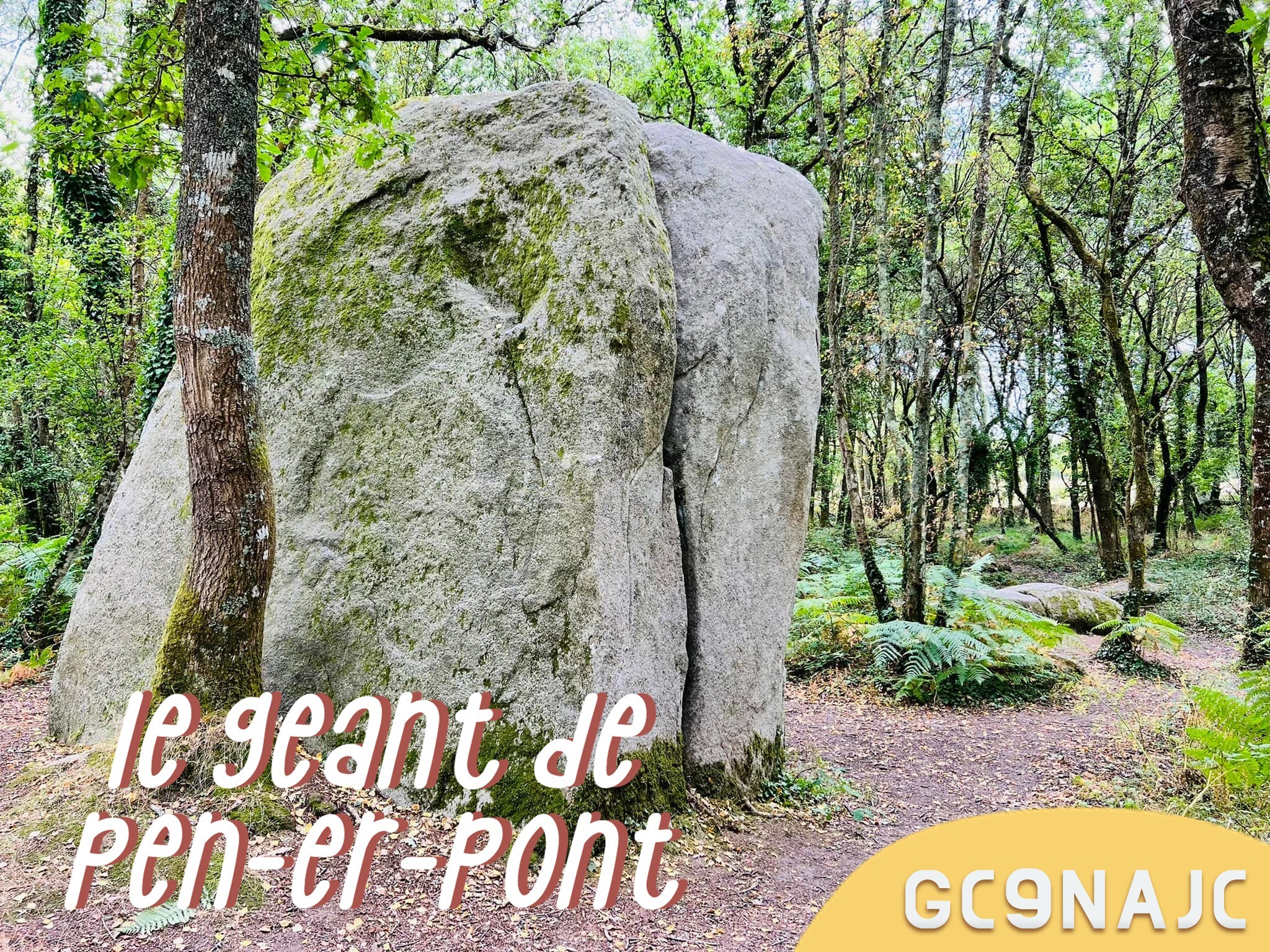
Merci Fred pour l'autorisation d'utilisation de ta photo !
Le premier « archéologue » du Morbihan était l'abbé de Plouhinec, Louis Gallès, en 1866. C'était le début de l'époque des sciences et à l'époque il va faire l'inventaire des monuments mégalithiques de la commune de Plouhinec. Il en découvrira une vingtaine (menhirs, dolmen, alignements, tumulus) dont il n'en reste aujourd'hui que quelques-uns sur la commune, les autres ayant été détruits au début du 20 siècle.
The first "archaeologist" of Morbihan was the abbot of Plouhinec, Louis Gallès, in 1866. It was the beginning of the era of science and at the time he will make an inventory of the megalithic monuments of the town of Plouhinec . He will discover about twenty of them (menhirs, dolmen, alignments, tumulus) of which only a few remain today in the town, the others having been destroyed at the beginning of the 20th century.

C'est au détour d'une balade sur un chemin de randonnée derrière le petit hameau de Kerdaniel qu'il est possible de découvrir l'un des derniers mégalithes encore debout, le géant, qui fait partie de l'ensemble de l'alignement des menhirs de Pen Er Pont. Cet alignement de Pen er Pont regroupe cinq sites sur une distance de 500 m et compte quatre files de 50 m comptant une vingtaine de blocs, toutes couchées, bousculées par le temps.
It is at the turn of a stroll on a hiking trail behind the small hamlet of Kerdaniel that it is possible to discover one of the last megaliths still standing, the giant, which is part of the whole alignment standing stones of Pen Er Pont. This alignment of Pen er Pont includes five sites over a distance of 500 m and has four lines of 50 m with about twenty blocks, all lying, jostled by time.
Il en reste un debout ! One remains standing!
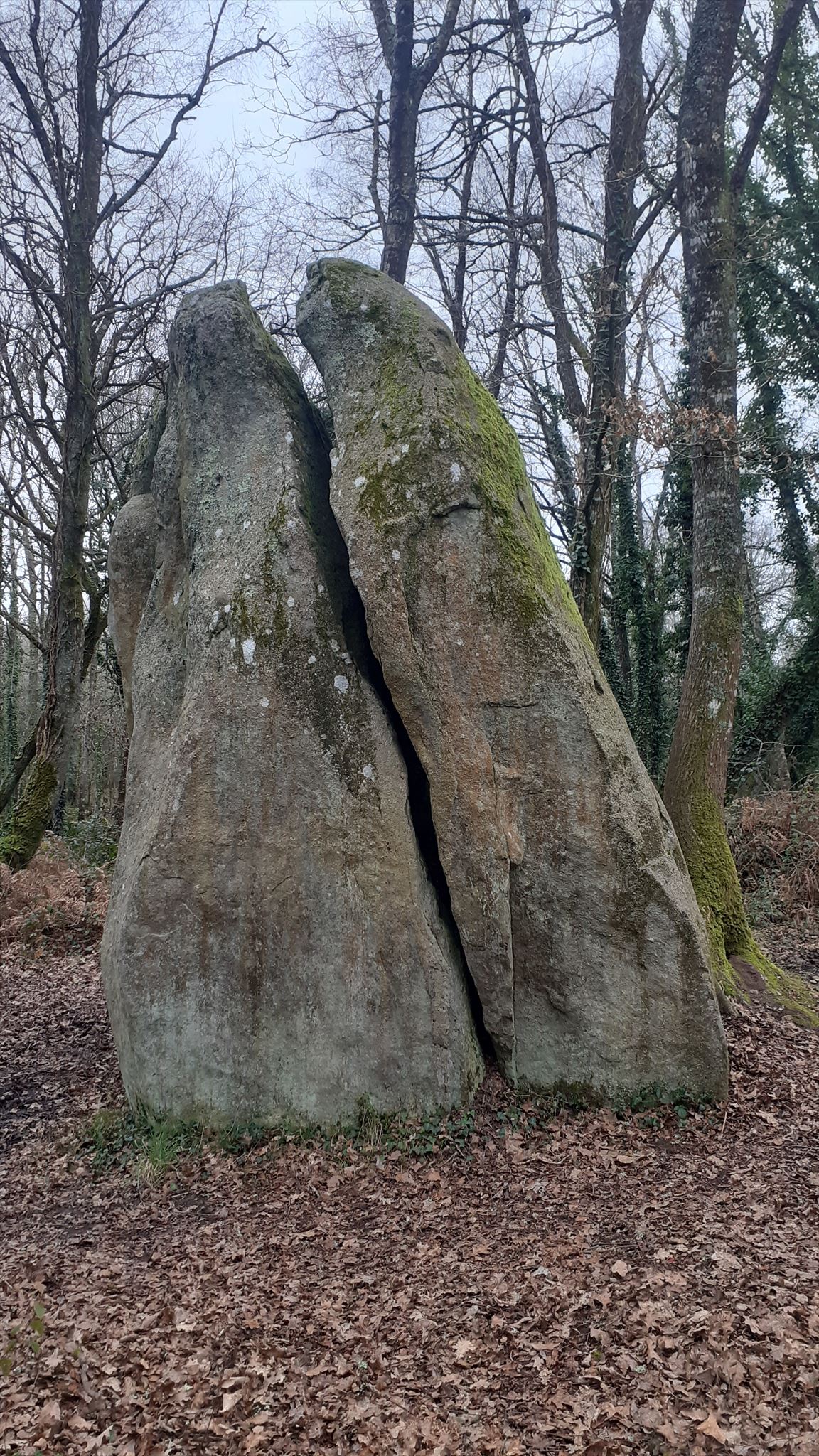
Ce menhir qui date du IVe millénaire provient d'une carrière proche et a été dressé au plus près de son lieu de production. Il est aujourd'hui fendu mais semble rester d'aplomb certainement encore pour quelques centaines d'années.
This menhir, which dates from the 4th millennium, comes from a nearby quarry and was erected as close as possible to its place of production. It is now split but seems to remain straight for a few hundred years.
Un regard sur la géologie du secteur / Look at the geology of the area
En s'intéressant aux formations géologique de la commune on découvre que celle ci repose principalement sur deux grands types de sol : un sol granitique et sol à filons de pegmatite. Et sur le secteur de Pen-Ar-Pont le sous-sol est principale constitué de Granite de Carnac.
By taking an interest in the geological formations of the town, we discover that it is mainly based on two main types of soil: granite soil and soil with pegmatite veins. And in the Pen-Ar-Pont sector, the basement is mainly made up of Granite de Carnac.

Le Granite de Carnac forme un massif compact qui affleure depuis le Blavet jusque sur la côte ouest du golfe du Morbihan; les meilleurs affleurements étant situés sur la rivière d’Etel.
Il est décrit comme un Granite clair à grain généralement fin qui se distingue essentiellement par la fréquence de la cordiérite(1) et localement de petits phénocristaux(2) centimétriques. Les mégalithes de la région sont tous extraits de ce Granite et érigés directement sur celui-ci.
The Granite de Carnac forms a compact massif which outcrops from the Blavet to the west coast of the Gulf of Morbihan; the best outcrops being located on the Etel river.
It is described as a clear, generally fine-grained Granite which is distinguished mainly by the frequency of cordierite(1) and locally small centimetric phenocrysts(2). The megaliths in the region are all quarried from this Granite and erected directly on top of it.
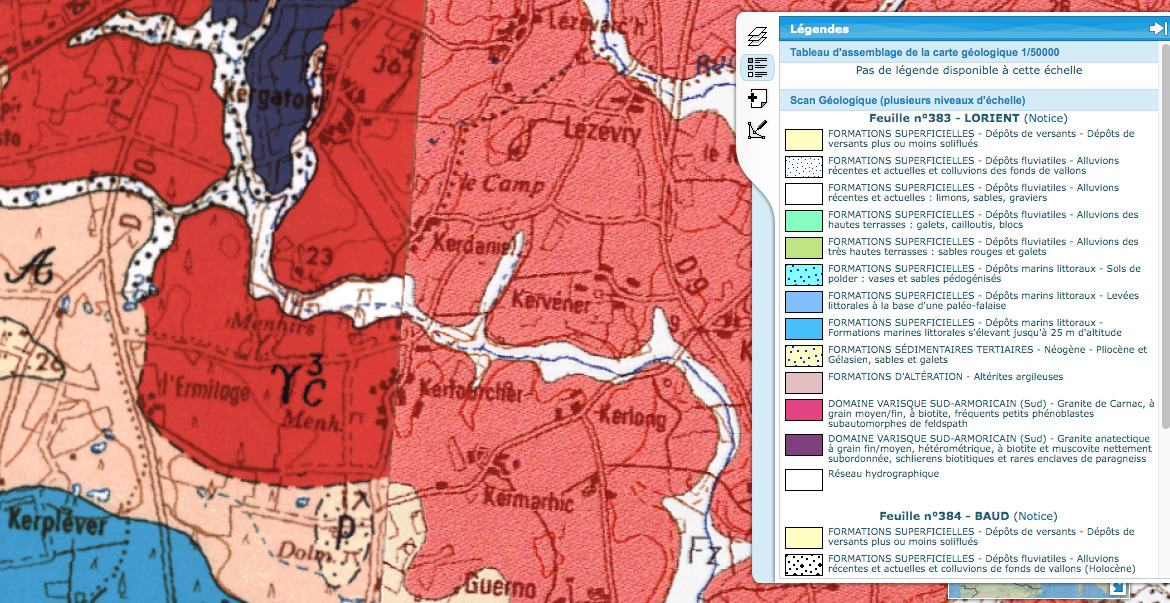
(1) - La cordiérite est un minéral assez largement distribué. On en rencontre dans les auréoles de métamorphisme de contact ainsi que dans les roches les plus profondes du métamorphisme régional comme les micaschistes, gneiss, granulites, migmatites et granites d'anatexie. La cordiérite est difficile à distinguer du quartz lorsqu'elle n'est pas altérée.
(1) - Cordierite is a fairly widely distributed mineral. They are found in the aureoles of contact metamorphism as well as in the deepest rocks of regional metamorphism such as micaschists, gneiss, granulites, migmatites and anatectic granites. Cordierite is difficult to distinguish from quartz when unweathered.
 Granite avec de grands cristaux de cordiérite (noirs) / Granite with large cordierite crystals (black)
Granite avec de grands cristaux de cordiérite (noirs) / Granite with large cordierite crystals (black)
(2) - Un phénocristal est un cristal d'une taille telle qu'il est visible à l'œil nu. On peut parler de phénocristaux pour des cristaux d'un diamètre allant d'un millimètre à dix centimètres. Les phénocristaux ont pour synonyme mégacristaux ou macrocristaux.
(2) - A phenocryst is a crystal of such size that it is visible to the naked eye. We can speak of phenocrysts for crystals with a diameter ranging from one millimeter to ten centimeters. Phenocrysts are synonymous with megacrystals or macrocrystals.
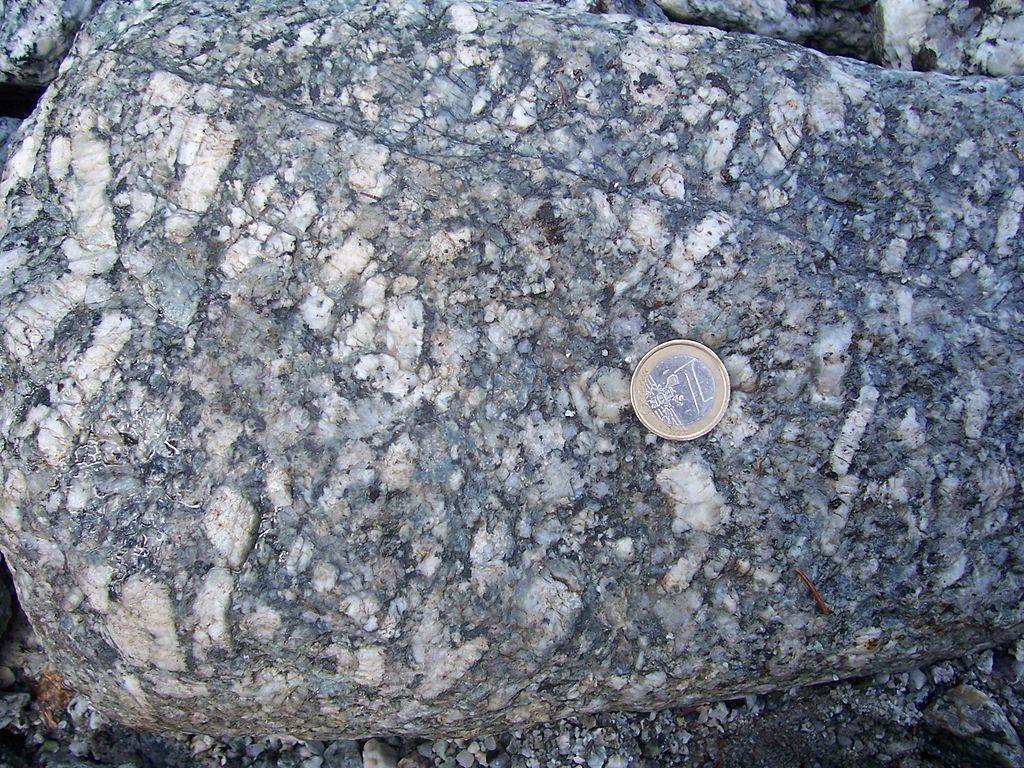
Phénocristaux de plagioclases (taches blanches) sur un bloc de granite / Plagioclase phenocrysts (white spots) on a block of granite.
Pour valider cette earthcache / To validate this earthcache
Pour valider cette earthcache vous allez à avoir à scruter attentivement le géant pour répondre aux questions suivantes.
1 - En faisant le tour du Géant pouvez-vous découvrir des traces de cordiérite, si oui sur quelle(s) face(s) du rocher ? Face Nord, face Est, face Sud, face Ouest ?
2 - Toujours sur le Géant pouvez-vous distinguer des phénocristaux dans cet immense bloc de Granite ? Sur quelle(s) face(s) ?
Enfin pour valider votre découverte vous devez vous rendre au WP2 aux coordonnées N 47° 43.071' W 3° 14.945' et prendre une photo de vous (ou d'un objet vous représentant, ou de votre nom inscrit sur un papier ou sur votre main) avec la roche ronde en arrière plan.
To validate this earthcache you are going to have to carefully scrutinize the giant to answer the following questions.
1 - By walking around the Giant can you discover traces of cordierite, if so on which face(s) of the rock? North face, East face, South face, West face?
2 - Still on the Giant can you distinguish phenocrysts in this huge block of Granite? On which face(s) of the rock?
Finally, to validate your discovery, you must go to WP2 at coordinates N 47° 43.071' W 3° 14.945' and take a photo of you (or of an object representing you, or of your name written on a piece of paper or on your hand ) with the round rock in the background.
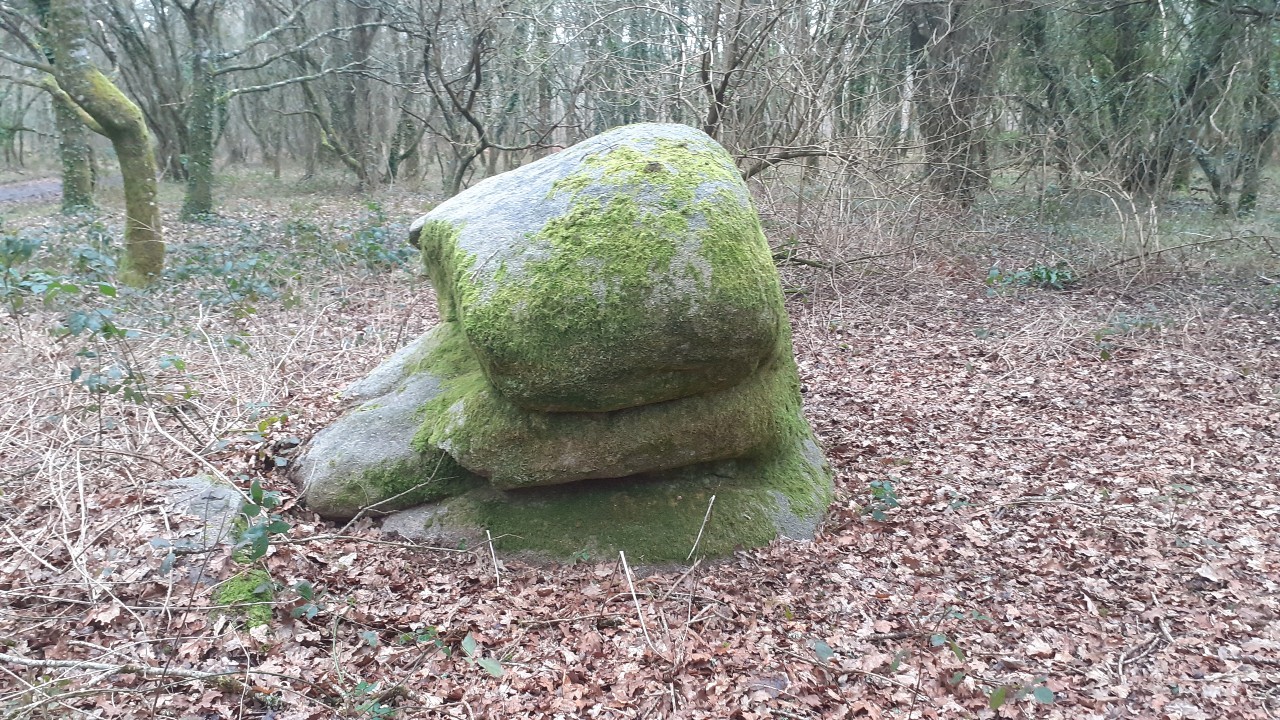
Pour rappel dans les earthcaches il n'y a pas de boîte à trouver. Il vous faut juste vous rendre sur place et répondre aux questions d'observation qui vous sont posées.
Vous pouvez loguer votre découverte mais devez m'envoyer vos réponses. Je vous recontacterais en cas de grosses erreurs dans vos réponses. Attention la photo est OBLIGATOIRE pour valider votre découverte, sans elle votre log sera effacé !
As a reminder in the earthcaches there is no box to find. You just have to go there and answer the observation questions that are asked of you.
You can log your discovery but must send me your answers. I will contact you again in case of big errors in your answers. Attention the photo is MANDATORY to validate your discovery, without it your log will be erased!
Sources : Système d’Information sur la Géologie du Morbihan / Plan local d'urbanisme, commune de Plouhinec / Wikipedia / Ouest-France